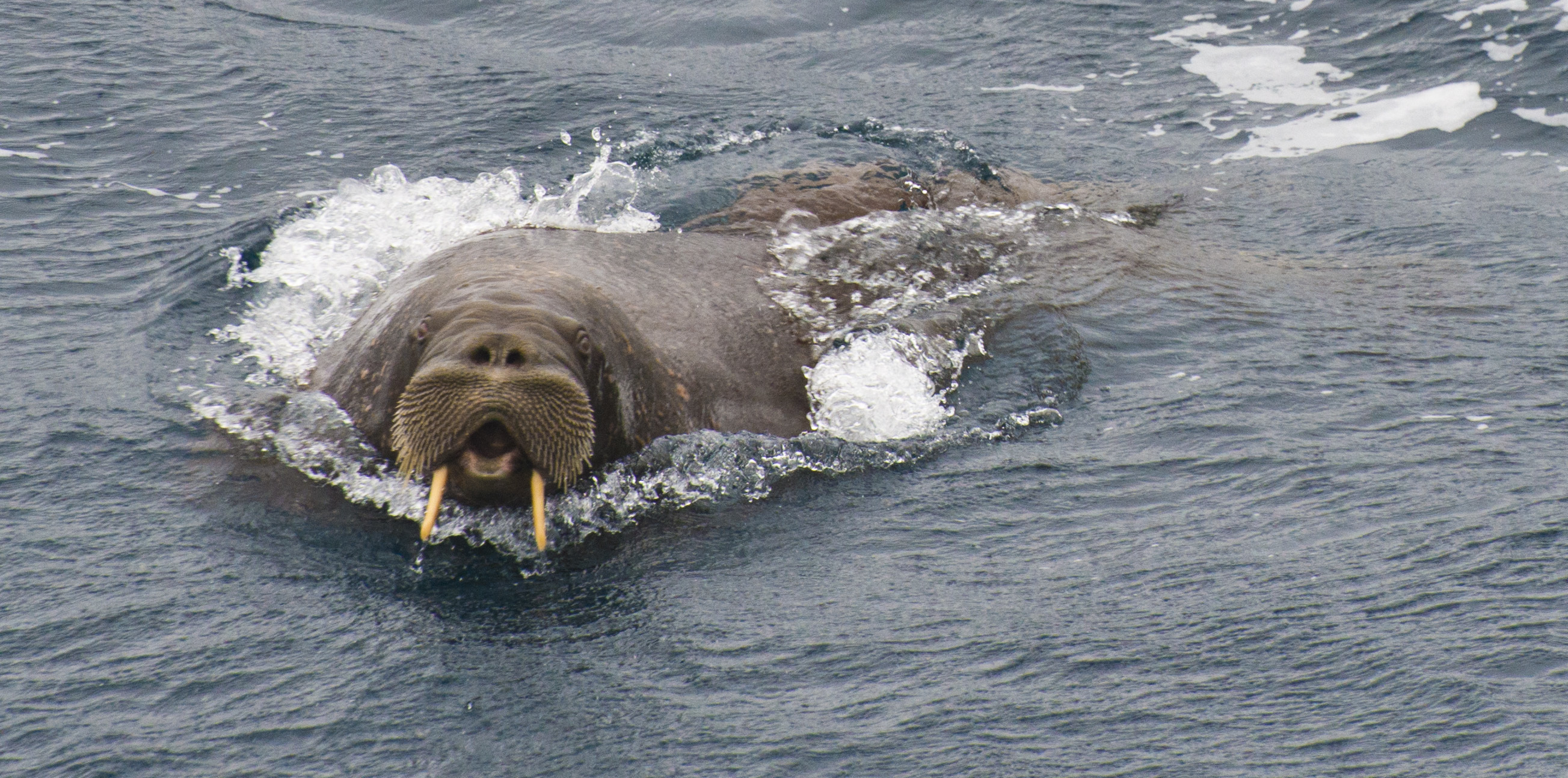A stampede suspected as dozens of walruses are found dead on Alaska’s Arctic coast

Dozens of walruses were found dead this week near the village of Point Lay on a barrier Arctic island that has emerged as a favored end-of-summer haulout for animals trying to survive without summer sea ice.
Federal wildlife officials suspect a stampede or stampedes. Many of the dead walruses were young animals more vulnerable to trampling. Officials hope to send a veterinarian to check the carcasses and learn more about what happened, said Andrea Medeiros, a spokesperson for U.S. Fish and Wildlife Service.
Walruses sometimes stampede to the sea after being startled by planes, boats, hunters, bears or other dangers, real or imagined. The local tribal government and the Fish and Wildlife Service have urged people to stay away from the spectacle of tens of thousands of walruses grunting and snorting, sleeping and sunning in a concentrated area.
[Walrus haulout in Northwest Alaska forms at earliest date ever recorded]
On Monday, a resident hired by Fish and Wildlife Service to monitor the walrus haulout counted 64 dead animals, Medeiros said. But they didn’t necessarily all die in a single event.
In recent years as sea ice has diminished, coastal areas along the Chukchi Sea have become draws for large groups of female walruses and their young.
Walruses eat mollusks and other seafloor foods. Years ago, they could rest on an ice shelf and feed along the shallow continental shelf. But now ice retreats far beyond the continental shelf. Waters near the ice are too deep for foraging.
This year, walruses began showing up near Point Lay on Aug. 3, earlier than ever before, according to Fish and Wildlife Service. Biologists were just installing cameras on towers on the barrier island about a mile north of Point Lay across a lagoon and already some walruses were appearing.
“They come and go,” Medeiros said. But lately about 30,000 to 40,000 are gathered there, she said.
The community and Fish and Wildlife Service have tried to keep away curious wildlife viewers in order to prevent disturbances and protect the walruses.
Two years ago, the federal agency and the Native Village of Point Lay — the tribal government — took the unusual step of issuing a statement asking the media and others to stay away. A video was made as well.
Point Lay doesn’t have the capacity to handle large numbers of visitors, and also wants to protect the animals, the notice said.
This year, locals say they saw a plane and also an unfamiliar boat close to shore. The Federal Aviation Administration and the U.S. Coast Guard have issued guidelines for pilots and boats to steer clear of walrus haulouts.
There’s effectively a community rule against hunting walruses that have hauled out in big numbers, Medeiros said. That’s for the safety of people and animals. If only a few are onshore, though, some hunters may target them, she said.
The resident who monitors the walruses for the federal government is familiar with how to approach quietly, she said.
She was in Point Lay in August with a representative of the Alaska Teen Media Institute. They are working on a video with local youths about the walruses, and how to protect them.
“It is difficult to make a meaningful comparison among the numbers of carcasses counted each year,” the Fish and Wildlife Service said. “This is because of the many variables, including the duration of each haulout, the number of times surveys get conducted, and the number of storms that occur that wash away carcasses etc.”
The federal government is considering whether to recommend that walruses be put on the list of endangered or threatened species.